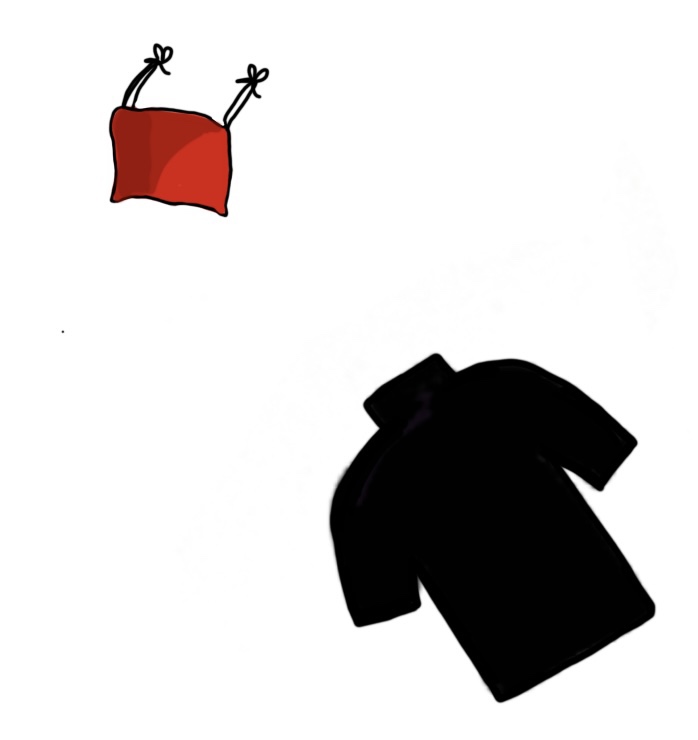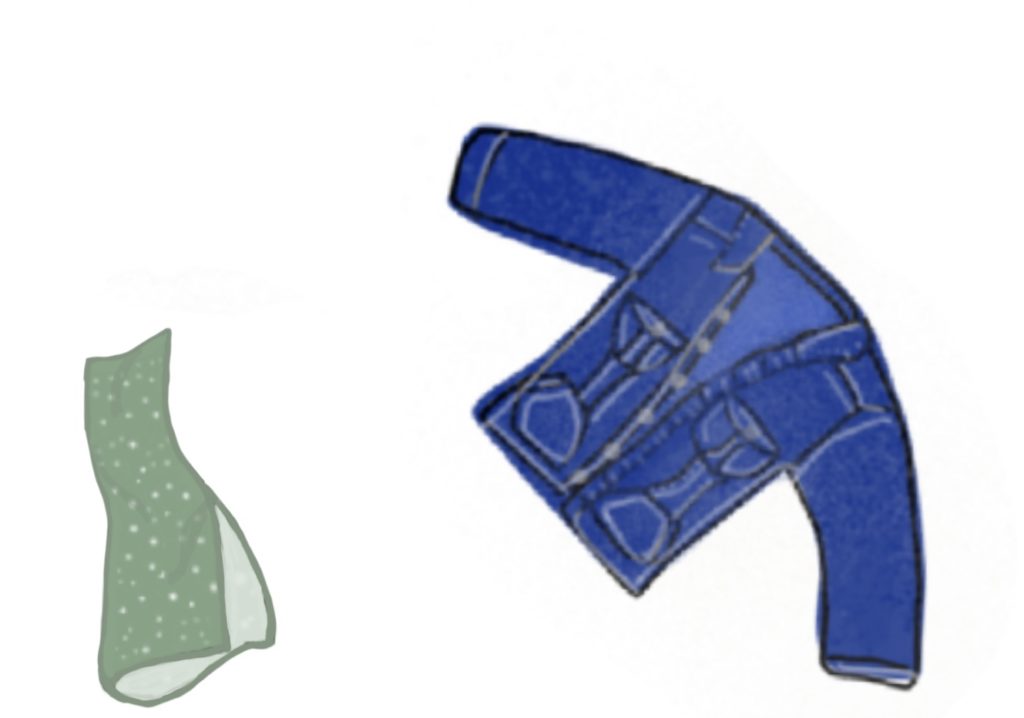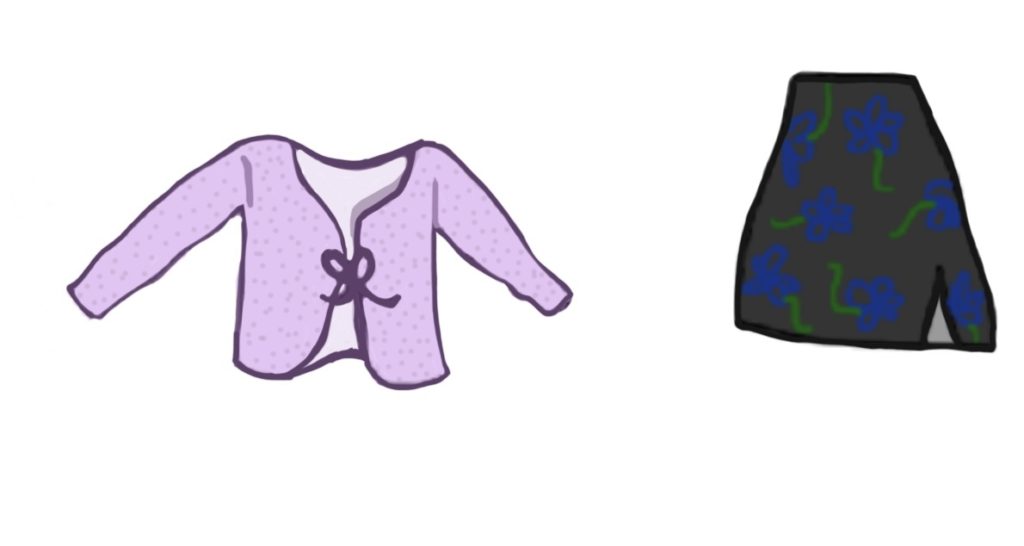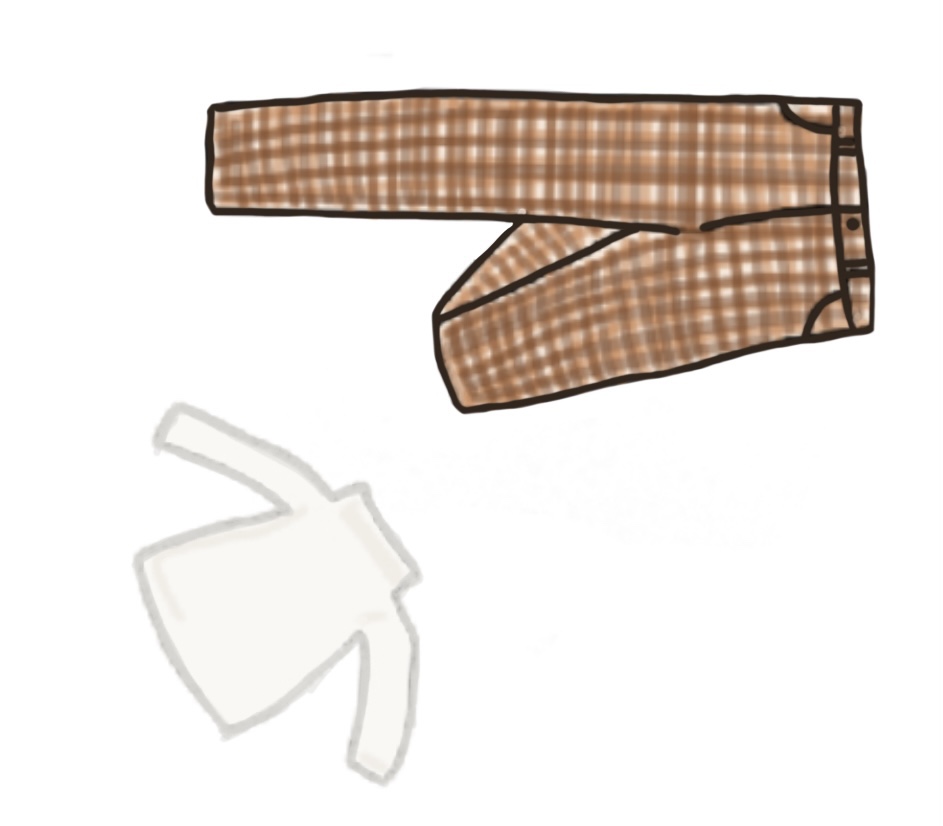To celebrate Second-Hand September and the birth of my blog, I thought I’d kick things off with my top five reasons for shopping second-hand.
With countless vintage shops and sellers popping up, and high-street retailers, influencers, and celebrities backing second-hand in some form or another, it’s becoming easier than ever to get your fix.
If you need some convincing, keep reading for thrifting tips, tricks and truths.

1. You can find unique items
You buy a new top. Blink. And suddenly everyone around you seems to be wearing exactly the same one. It’s not the end of the world, but it’s one of those little things that really gets to me. Before I know it, I’ll be spiralling into a mini existential crisis, questioning whether I even liked the item in the first place, or if I was just getting sucked into the same covert marketing as everyone else… (Take a look at this article for some interesting information about how we may be impacted psychologically by common marketing tactics used to sell fast fashion.)
The good news? Vintage shopping isn’t about to put you through that.
When you head to a vintage store, pieces will pretty much always be unique and one-of-a-kind. You might find a similar type or style of item, but even then, there will be some variation that sets each one apart. Let’s say you walk into one place that stocks multiple pairs of second-hand Levi’s (not uncommon). I can pretty much guarantee that each pair will have a different amount of wear, fit slightly differently, or look that little bit different.
Don’t get me wrong, I still buy into fads all the time, and there are definitely trends where certain second-hand items become especially popular, but shopping vintage can help you to maintain that little bit of individuality.

2. There’s so much variety
That uniqueness also means you also basically have a never-ending supply of new items to browse through. One of the pulls of fast fashion is that brands are able to constantly refresh their stock, so shoppers can go online and find newly stocked items to add to their basket every day. As an example, check out Pretty Little Thing’s “New In Today” category, where you’re likely to find hundreds of new pieces. Head into “New In This Week”, and it’s probably jumped into four digits.
But vintage shopping can actually offer you that too, on a smaller scale (honestly, who has the time to be scrolling through 389 items a day anyway?!). Because the individual items are so unique, you have a good chance of finding a completely new piece every time you go in. Once each of those one-off items is bought, it’s going to be replaced by something else entirely. So, if you stop by one day and find nothing you like, chances are, you’ll be able to pick up something that suits you next time.
A tip here is to try and work out when your favourite vintage shops get their deliveries of new stock, so you know when you’re most likely to find a whole range of new clothing. If you don’t fancy asking, one simple way to tell this is by checking their social media – you’ll generally see them promoting new stock on their Insta Story when they get it in, which gives you your cue to head down there.

3. You can get good quality at low prices
As items are second-hand, that results in a drop in cost, meaning you can get better-quality items for less. Compare this to fast-fashion items, where a drop in cost is achieved through the production of lower-quality items (which are often made from less environmentally friendly materials that don’t decompose, long outliving any trend), and worker exploitation.
One horrifying example of this mistreatment was seen in Bangladesh’s Rana Plaza factory. This collapsed in 2013, killing 1,100 people and injuring a further 2,500. Inside the factory, workers were producing clothes for a range of international brands, including Primark, in unsafe conditions.
And this isn’t a one-off. According to NY Times, there have also been hundreds of deaths caused by fires in Bangladeshi garment factories. On the surface, brands often campaign against these dangerous working conditions and low wages, but at the same time, this is coupled with constant pressure on the factories to cut costs in order to meet margins amid lowering prices, making these objectives increasingly difficult.
This conflict is clearly also felt much closer to home: an investigation discovered that workers in a Leicester factory supplying clothes to Boohoo were being paid as little as £3.50 an hour.
there have also been hundreds of deaths caused by fires in Bangladeshi garment factories
Shopping at a vintage store, on the other hand, often means you’re supporting local businesses or charities, so you can get your wardrobe refresh without the social and environmental cost. It’s clear which one is the winner.
On a lighter note, it’s also much easier to judge the quality of a piece straight away when you buy second-hand. When you’re buying new clothes, it can be hard to tell what will fade or shrink in the wash, or what will one big bobbly mess after a few wears. With vintage items, that wear-testing has already been done for you. If it’s in a good condition even after a previous owner, you know it’s going to be much more likely to see you through for longer.

4. It’s the perfect excuse to experiment
Those low prices and great variety also give you more room to try out some pieces you wouldn’t normally go for. Also, the more you get involved in second-hand communities like Depop, the more easily you can trade clothes. So, if the piece doesn’t still spark that joy when you get home, you know that you can sell it on from the comfort of your bedroom.
On top of that, the fact that items are second-hand and low cost (monetarily and environmentally), always seems to take away a barrier for me, and I’m more ready to try and adjust vintage clothes myself. That especially applies to anything I buy at a kilo sale, where items are ultra-cheap and often haven’t had much love given to them in a while. Trying to mend one of these items, or rework it into something new, is only going to increase the chances of getting more use out of it. Plus, if everything goes wrong, I’ll be left with some fabric and maybe a lesson for next time.
If you’re looking to do this with any of your vintage finds and are wanting some inspo, why not browse through some thrift flips on YouTube? (I’d recommend checking out bestdressed).

5. It combats waste
Buying second-hand means that you’re helping to promote a circular economy. You’re essentially preventing clothes going to landfill, and also getting something nice for yourself.

One of the major fast-fashion tactics is to produce high volumes of products (because they’re cheaper), release them for a limited period (to convince shoppers to buy quickly), and then discard any unsold items. According to The Guardian, more than half of the fast-fashion clothing produced is thrown away within the same year.
Individually, we also play our part in sending clothes to landfill. On average, each American throws out the equivalent of 191 t-shirts a year (that’s a lot of Marie Kondo-ing).
Going out and increasing the demand for second-hand increases the likelihood of those items ending up with a new owner (or not being made at all), rather than at the bottom of the ocean.
Another issue with discarding clothing at this rate is that we’re effectively wasting the resources used during production. Each of those t-shirts being thrown away – whether or not it made it to your wardrobe – has consumed about 2,700 litres of water, in order to grow the cotton that it’s composed of. And combine the full production process of that single t-shirt with one of the pairs of Levi’s I mentioned earlier? You might be drinking up 20,000 litres, which would take an average person 13 years to knock back.
That’s not even mentioning the pesticides that were likely used to grow the materials, and the further energy used in the transportation and finishing of each garment, which contribute to the negative environmental impact of the industry. In 2015, textile production was responsible for 1.2 billion tons of greenhouse gas emissions – more than flights and shipping.
Recycling or reusing that cotton clothing for a new purpose uses just 2.6 percent of the energy required to make the initial garment.
Buying clothes second-hand obviously doesn’t reverse the damage caused during their production, but what it can do is make more use of the energy already used, keep items out of landfill, and decrease the demand that results in further harm to the planet.

That just about sums up my top reasons for buying vintage, or second-hand, clothing. The price of fast fashion often seems to be too good to be true, and once you dig into the hidden costs, there’s no denying that it is. In an ideal world, we’d all stop purchasing anything we don’t need and consume less – full stop. But shopping vintage offers us a good middle ground, and a chance to start slowing down and making more conscious choices. So, if you’re able to, why not set some time aside to head to a nearby vintage or charity shop and help your local community, your wallet, and the planet?

Pingback: the best vintage shops in sheffield – slow sheffield
Pingback: Should we boycott Black Friday?